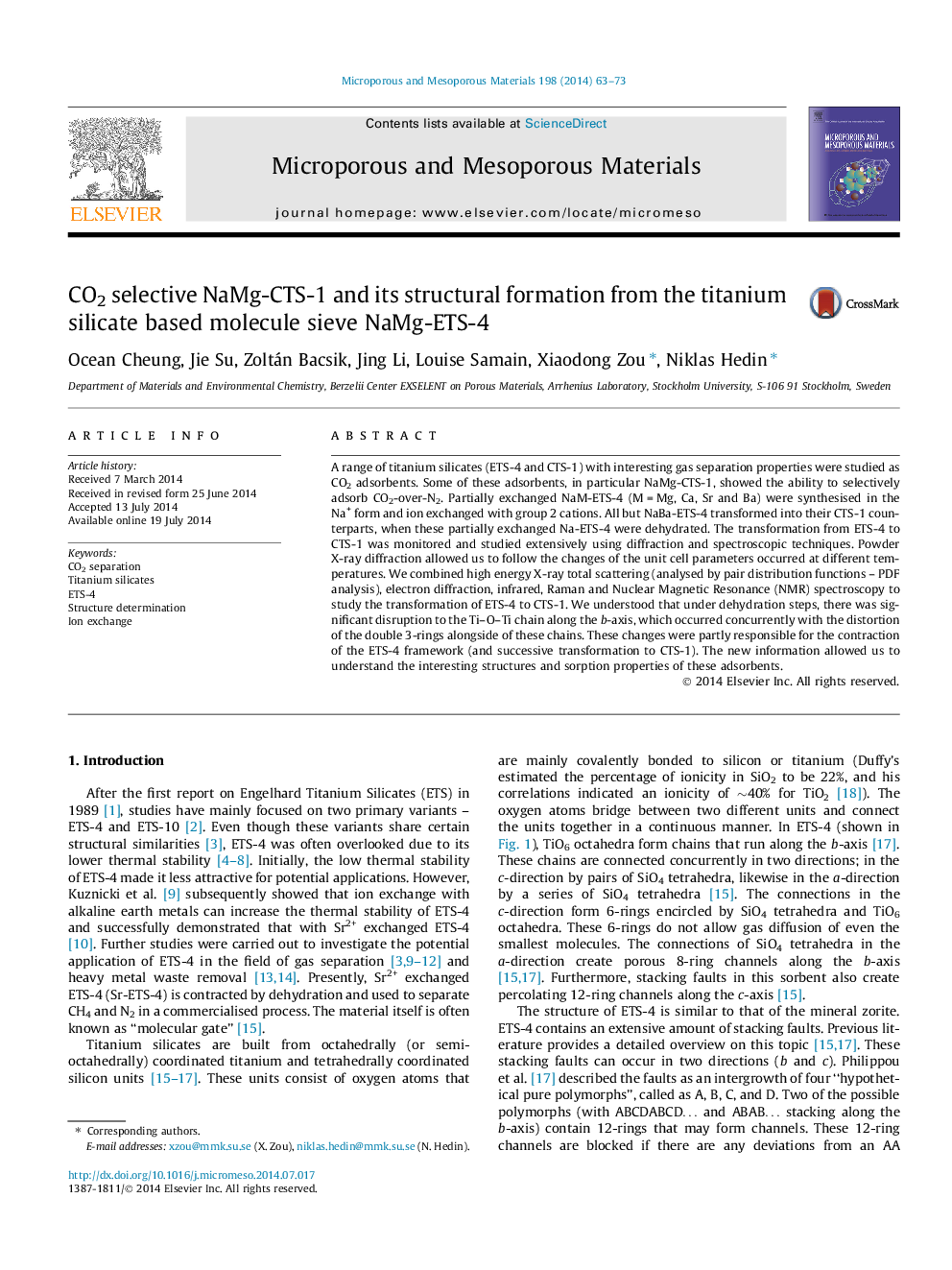| Article ID | Journal | Published Year | Pages | File Type |
|---|---|---|---|---|
| 72934 | Microporous and Mesoporous Materials | 2014 | 11 Pages |
•Several partially ion-exchanged ETS-4 were investigated as CO2 sorbents.•NaMg-CTS-1 showed kinetically enhanced CO2 selectivity over N2.•Transformation of NaMg-ETS-4 to NaMg-CTS-1 was extensively studied.•NaCa-ETS-4, NaSr-ETS-4 were also investigated and their transformation NaM-CTS-1.
A range of titanium silicates (ETS-4 and CTS-1) with interesting gas separation properties were studied as CO2 adsorbents. Some of these adsorbents, in particular NaMg-CTS-1, showed the ability to selectively adsorb CO2-over-N2. Partially exchanged NaM-ETS-4 (M = Mg, Ca, Sr and Ba) were synthesised in the Na+ form and ion exchanged with group 2 cations. All but NaBa-ETS-4 transformed into their CTS-1 counterparts, when these partially exchanged Na-ETS-4 were dehydrated. The transformation from ETS-4 to CTS-1 was monitored and studied extensively using diffraction and spectroscopic techniques. Powder X-ray diffraction allowed us to follow the changes of the unit cell parameters occurred at different temperatures. We combined high energy X-ray total scattering (analysed by pair distribution functions – PDF analysis), electron diffraction, infrared, Raman and Nuclear Magnetic Resonance (NMR) spectroscopy to study the transformation of ETS-4 to CTS-1. We understood that under dehydration steps, there was significant disruption to the Ti–O–Ti chain along the b-axis, which occurred concurrently with the distortion of the double 3-rings alongside of these chains. These changes were partly responsible for the contraction of the ETS-4 framework (and successive transformation to CTS-1). The new information allowed us to understand the interesting structures and sorption properties of these adsorbents.
Graphical abstractFigure optionsDownload full-size imageDownload as PowerPoint slide
